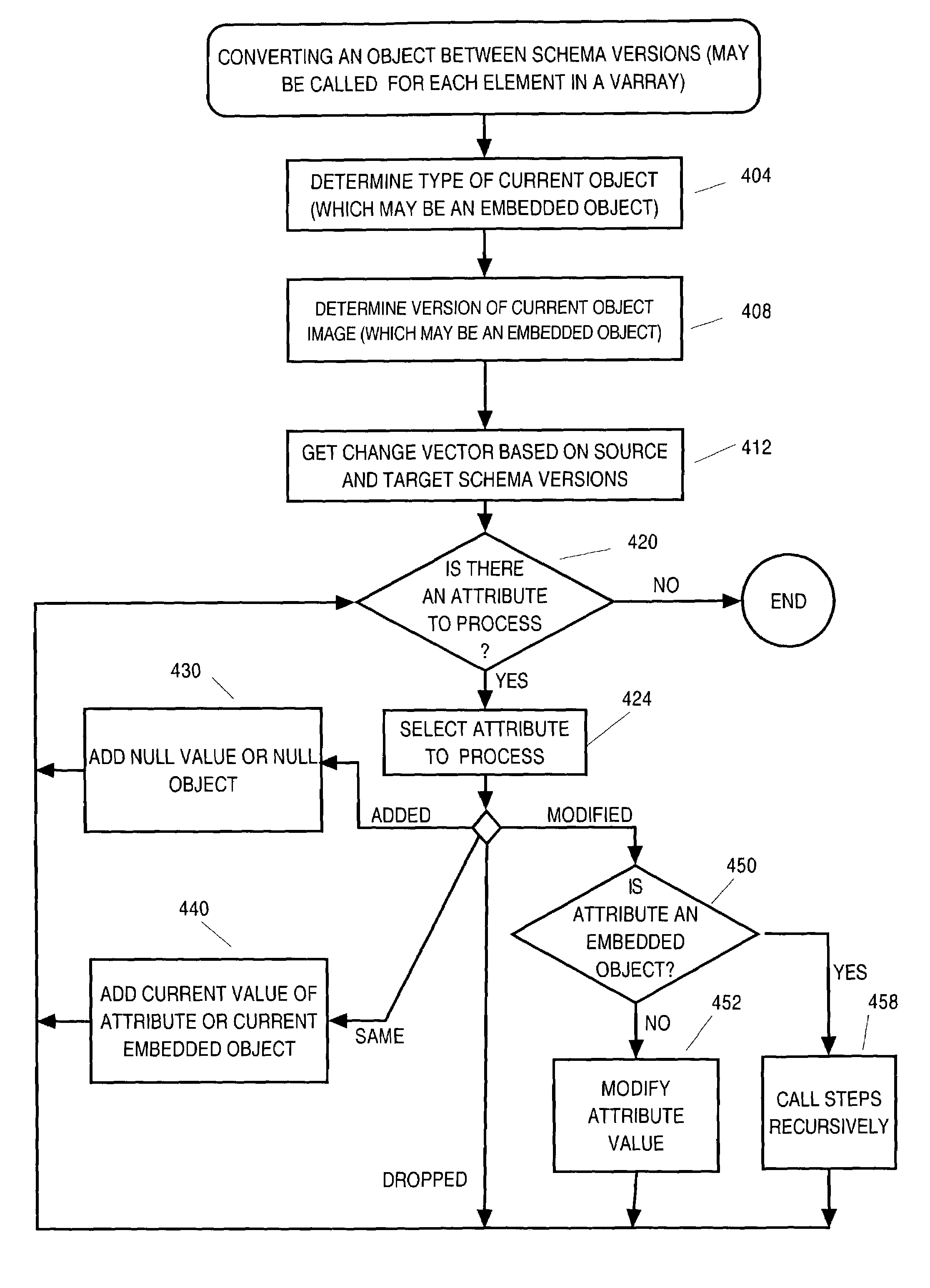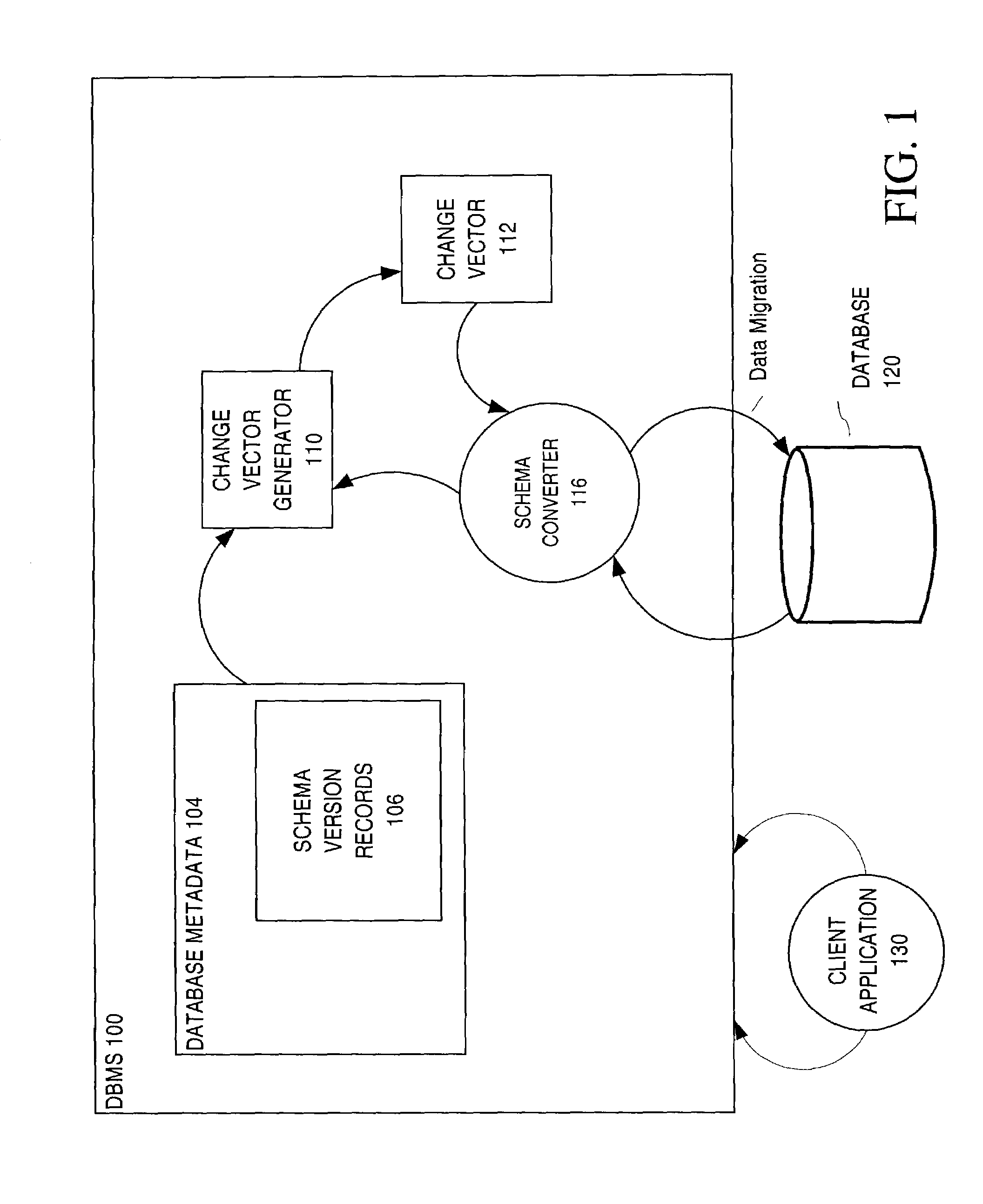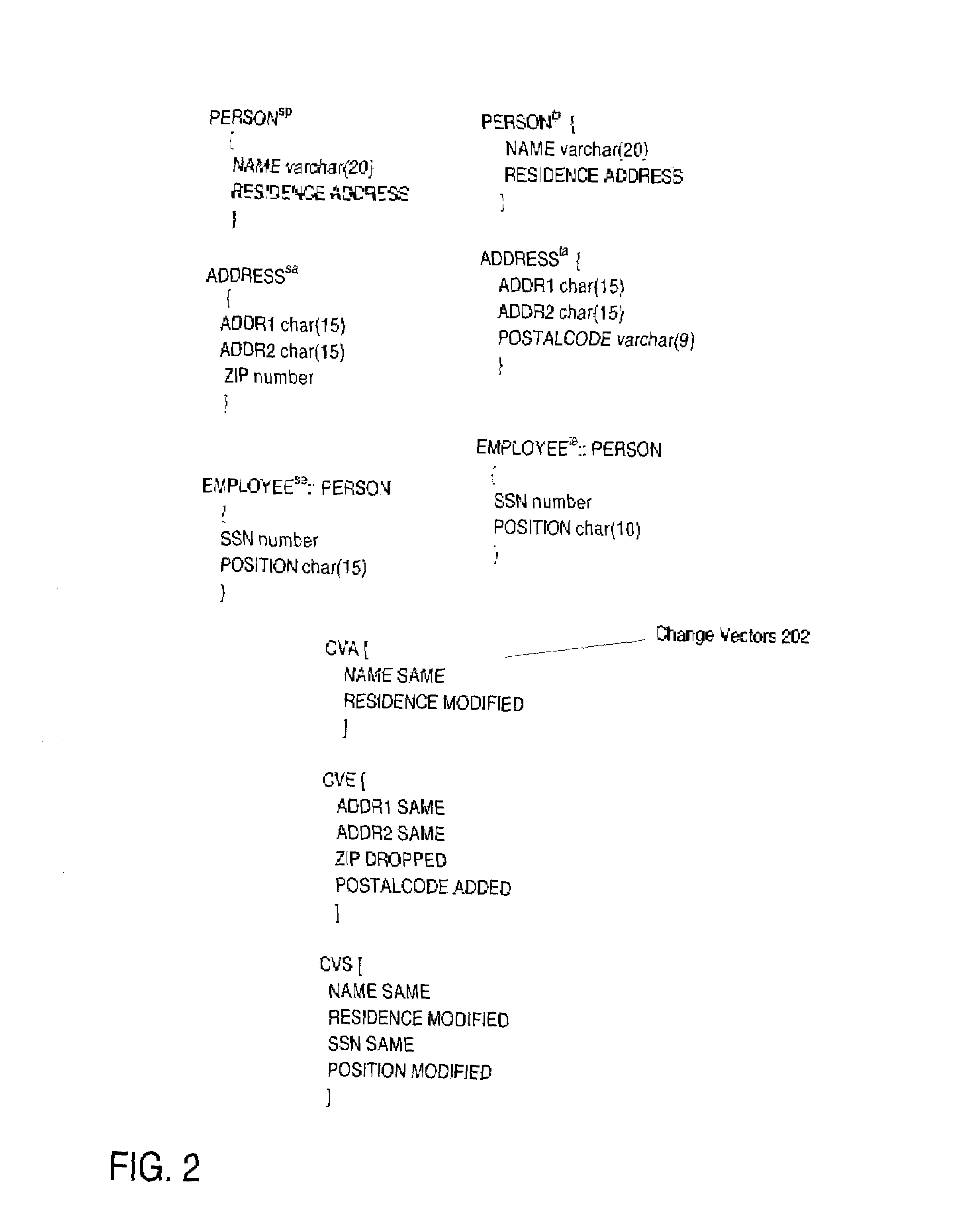Schema evolution of complex objects
a complex object and schema technology, applied in the field of schema evolution of complex objects, can solve the problems of inability to convert images that represent instances of subclasses, and inability of schema conversion mechanisms to handle images created or processed by software using these advances in object-oriented technology
- Summary
- Abstract
- Description
- Claims
- Application Information
AI Technical Summary
Problems solved by technology
Method used
Image
Examples
Embodiment Construction
[0033]A method and apparatus for schema conversion is described. In the following description, for the purposes of explanation, numerous specific details are set forth in order to provide a thorough understanding of the present invention. It will be apparent, however, that the present invention may be practiced without these specific details. In other instances, well-known structures and devices are shown in block diagram form in order to avoid unnecessarily obscuring the present invention.
Overview
[0034]Described herein are schema conversion approaches that convert images of complex objects created using various object-oriented features. In particular, the schema conversion approaches allow conversion of images of objects belonging to a root class, whether those objects are instances of the root class or instances of the subclass of the root class. An example of such a data structure is an image of a VARRAY that is defined to hold objects belonging to the base class of the varray. T...
PUM
 Login to View More
Login to View More Abstract
Description
Claims
Application Information
 Login to View More
Login to View More - R&D
- Intellectual Property
- Life Sciences
- Materials
- Tech Scout
- Unparalleled Data Quality
- Higher Quality Content
- 60% Fewer Hallucinations
Browse by: Latest US Patents, China's latest patents, Technical Efficacy Thesaurus, Application Domain, Technology Topic, Popular Technical Reports.
© 2025 PatSnap. All rights reserved.Legal|Privacy policy|Modern Slavery Act Transparency Statement|Sitemap|About US| Contact US: help@patsnap.com



